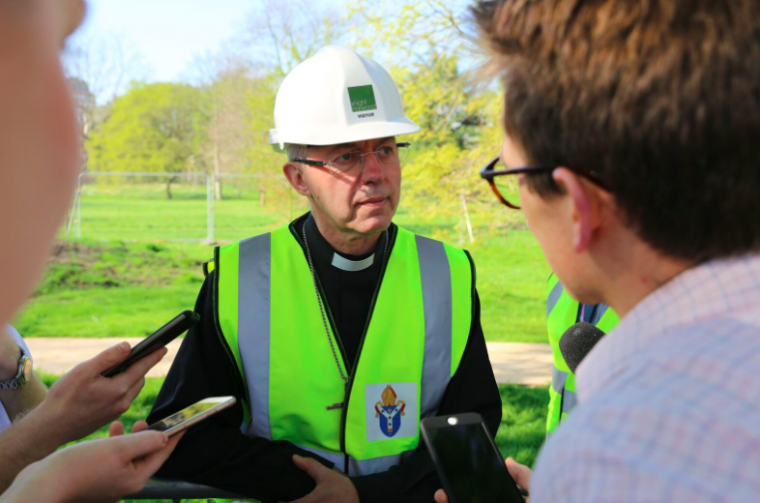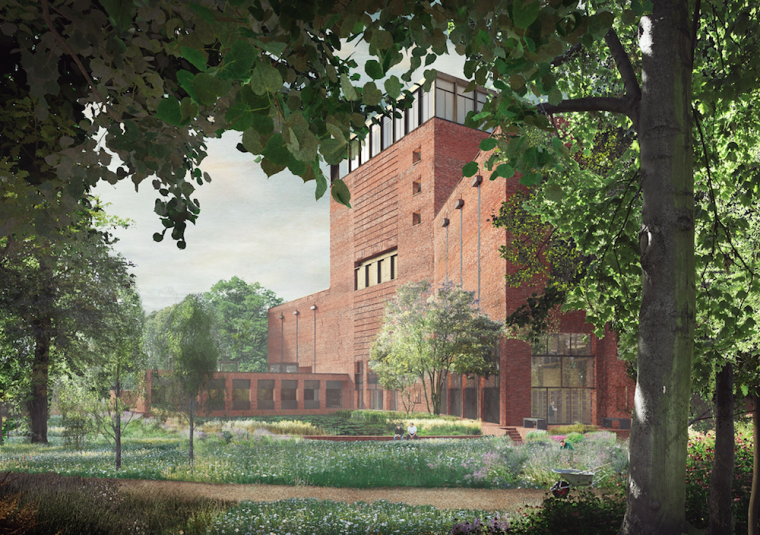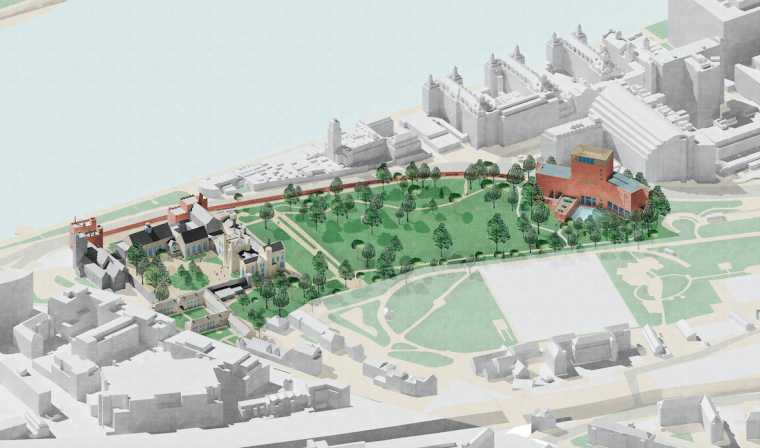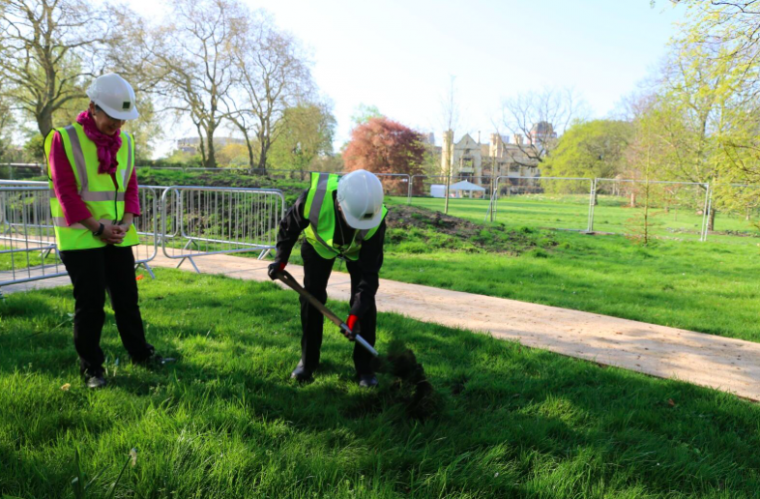'Most important religious collection outside Vatican': Welby launches Lambeth Palace's £23m library
Donning a high-vis jacket and construction helmet, the archbishop of Canterbury took part in a 'ground-breaking' ceremony to mark the start of construction for Lambeth Palace's first new building in more than a century.
The state-of-the-art library will cost in excess of £23million and will house the most important collection of religious artefacts outside the Vatican.

Justin Welby hailed it as a 'very exciting moment indeed' saying the collection 'speaks volumes about the centrality of faith in the life of the nation over its history'.
'I feel personally very strongly that there is no point in having these things if they are never seen. Why have them if you hide them away? They tell us a huge amount about the history of the nation particularly in the pre-Reformation period,' he told journalists at the ceremony in Lambeth Palace gardens. 'They testify to generation after generation who were disciples who loved and followed Jesus Christ.'
Asked what was his favourite item in the collection Welby cited a 'particularly whacky thing which is the gloves that [King] Charles I wore on the scaffold' before his execution.

However he said his favourite thing was either the correspondence of former archbishop of Canterbury William Temple (1881-1944) or King Richard III's prayer book which he had at his death at the Battle of Bosworth in 1485.
The collection amount to nearly 10 kilometres of archives, with more than 5,000 volumes of manuscripts and more than 200,000 printed books.
It includes the only surviving copy of the execution warrant of Mary, Queen of Scots by Elizabeth I in 1587 and the personal letters between Prince Albert (who went on to become King George VI) and the then archbishop about his marriage to Elizabeth Bowes-Lyon, later the Queen-Mother, in 1923.

Spread between Lambeth Palace's current library and a warehouse in south-east London, Welby said the conditions were 'completely unsuitable for preserving the extraordinary treasures'.
'It is a huge responsibly for the Church that those are kept because they are national treasures. We need an up-to-date building that gives access to scholars, proper ability for visitors to see the best of the treasures, and is purpose designed so that what is there can be used and seen and guarded and kept permanently,' he said.
'The [current] risk is fire, flood and above all pollution,' he added.
Instead the new nine-storey building, due to be completed in 2020, will allow the ancient treasures to be kept in climate-controlled rooms to preserve their condition.

'This new library is going to be human centred,' said Welby. 'It is around the person made in the image of Christ who comes to learn of the riches of our history.'
Declan Kelly, Lambeth Palace library director, said: 'The new building means the library can expand and enhance its mission to support the work of the archbishop and the wider church. We will be able to not only protect and preserve the collections but provide greater access to them than ever before. It will also be a space which can be used by and for the Church to promote the Christian message and raise the profile of our Christian heritage as seen through the collections.'











